Related Research Articles

Admission to the bar in the United States is the granting of permission by a particular court system to a lawyer to practice law in the jurisdiction. Each U.S. state and jurisdiction has its own court system and sets its own rules and standards for bar admission. In most cases, a person is admitted or called to the bar of the highest court in the jurisdiction and is thereby authorized to practice law in the jurisdiction. Federal courts, although often overlapping in admission standards with states, set their own requirements.

The American Bar Association (ABA) is a voluntary bar association of lawyers and law students; it is not specific to any jurisdiction in the United States. Founded in 1878, the ABA's stated activities are the setting of academic standards for law schools, and the formulation of model ethical codes related to the legal profession. As of fiscal year 2017, the ABA had 194,000 dues-paying members, constituting approximately 14.4% of American attorneys. In 1979, half of all lawyers in the U.S. were members of the ABA. The organization's national headquarters are in Chicago, Illinois, and it also maintains a significant branch office in Washington, D.C.
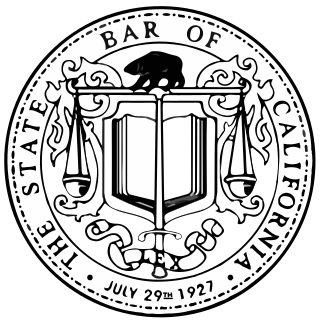
The State Bar of California is an administrative division of the Supreme Court of California which licenses attorneys and regulates the practice of law in California. It is responsible for managing the admission of lawyers to the practice of law, investigating complaints of professional misconduct, prescribing appropriate discipline, accepting attorney-member fees, and financially distributing sums paid through attorney trust accounts to fund nonprofit legal entities. It is directly responsible to the Supreme Court of California; however, its trustees are now appointed by the Supreme Court, the California Legislature, and Governor of California. All attorney admissions are issued as recommendations of the State Bar, which are then routinely ratified by the Supreme Court. Attorney discipline is handled by the State Bar Office of Chief Trial Counsel, which acts as prosecutor before the State Bar Court of California. The State Bar has been cited for its corrupt practices during the 21st century, and is subject to reforms issued by its governing body, the California Supreme Court.

James Hay served in both houses of the Virginia General Assembly, was a United States representative from Virginia and a judge of the Court of Claims.
Gerald Bruce Lee is a former United States district judge of the United States District Court for the Eastern District of Virginia.

Lavenski R. Smith is an American lawyer who has served as a judge of the United States Court of Appeals for the Eighth Circuit since 2002, serving as chief judge from 2017 to 2024. He previously served as an associate justice of the Arkansas Supreme Court from 1999 to 2000.
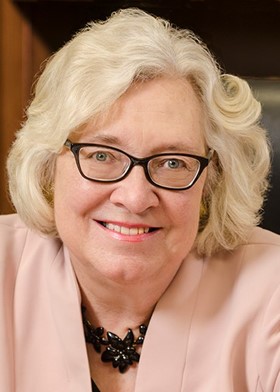
Julia Smith Gibbons is a United States circuit judge of the United States Court of Appeals for the Sixth Circuit.
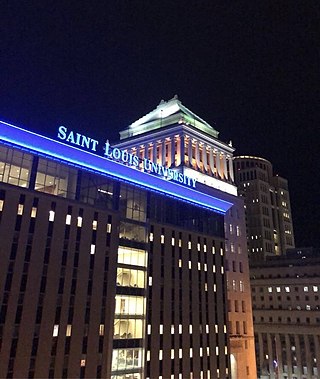
Saint Louis University School of Law, also known as SLU Law, is the law school affiliated with Saint Louis University, a private Jesuit research university in Saint Louis, Missouri. The school has been American Bar Association approved since 1924 and is a member of the Association of American Law Schools.

William G. Bassler is a former United States district judge of the United States District Court for the District of New Jersey, serving from 1991 until 2006. He is currently an adjunct professor at Fordham Law School in New York City and works as an arbitrator and mediator in New Jersey and New York City.
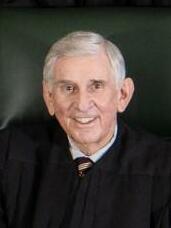
Robert Bruce King is a United States circuit judge of the United States Court of Appeals for the Fourth Circuit.

Richard D. Bennett is a United States Senior District Judge of the United States District Court for the District of Maryland. Born in Maryland, Bennett is a graduate of Severn School, the University of Pennsylvania, and the University of Maryland Francis King Carey School of Law. He previously served as an Assistant United States Attorney and the United States Attorney for Maryland, and was awarded multiple commendations for his service. In private practice, Bennett was a partner in a major Maryland law firm, where he specialized in white collar criminal defense. Appointed to the federal bench in 2003, he took senior status in 2021. While maintaining an active trial docket in the District of Maryland, Bennett has increasingly been sitting by designation with the United States Court of Appeals for the Ninth Circuit.
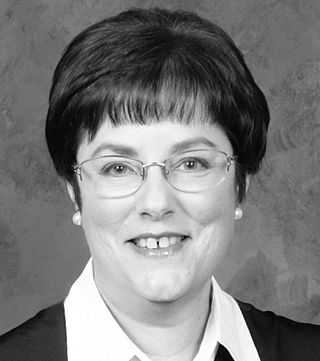
Susan Pia Graber is an American attorney and jurist. She is a senior United States circuit judge of the United States Court of Appeals for the Ninth Circuit. A native of Oklahoma, she was the 90th justice of the Oregon Supreme Court from 1990 to 1998. She served on the Oregon Court of Appeals from 1988 to 1990.

David Brock Hornby is an inactive senior United States district judge of the United States District Court for the District of Maine.

John Anthony Mendez is a senior United States district judge of the United States District Court for the Eastern District of California.
The University of Mississippi School of Law, also known as Ole Miss Law, is an ABA-accredited law school located on the campus of the University of Mississippi in Oxford, Mississippi. The School of Law offers the only dedicated aerospace law curriculum in the United States from an ABA-accredited school. The University of Mississippi School of Law is also the only school in the United States, and one of only a handful in the world, to offer a Master of Laws (LL.M.) in Air and Space Law.

Jill Anne Pryor is a United States circuit judge of the United States Court of Appeals for the Eleventh Circuit. Pryor was born in Harrisburg, Pennsylvania.
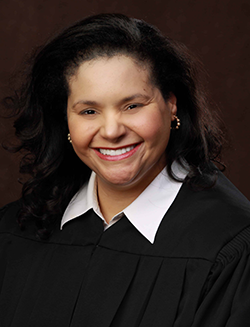
Ada Elene Brown is a United States district judge of the United States District Court for the Northern District of Texas. She is a former trial judge of the Dallas County courts and a former Justice of the Fifth Court of Appeals of Texas. She is the first African-American woman federal judge nominated by President Donald Trump and confirmed by the Senate. She is also the first African American woman to sit as a federal judge in the 140- year-history of the Northern District of Texas. A citizen of the Choctaw Nation, Brown is also one of six actively serving Native American federal judges of 673 federal district court judges. When appointed to the federal bench, Brown became the only woman judge in the 233-year history of the Choctaw Nation to serve as a federal judge.

In the United States, those seeking to become lawyers must normally pass a bar examination before they can be admitted to the bar and become licensed to practice law. Bar exams are administered by states or territories, usually by agencies under the authority of state supreme courts. Almost all states use some examination components created by the National Conference of Bar Examiners (NCBE). Forty-one jurisdictions have adopted the Uniform Bar Examination (UBE), which is composed entirely of NCBE-created components.
References
- 1 2 3 4 Adwar, Corey (July 30, 2014). "There's A Way To Become An Attorney Without Setting Foot In Law School". Business Insider .
- ↑ Harno, Albert J. (1953). Legal Education in the United States: A Report Prepared for the Survey of the Legal Profession. p. 23.
- ↑ Harno (1953) , p. 27.
- ↑ Harno (1953) , pp. 19–20.
- ↑ Allen, Frederick James (1919). The Law as a Vocation. Harvard University. p. 25.
- ↑ Harno (1953) , pp. 86–87.
- ↑ Journal, A. B. A. "Students try to avoid law school costs with 'reading law' path to law license". ABA Journal.
- ↑ "TITLE 4. ADMISSIONS AND EDUCATIONAL STANDARDS Adopted July 2007 DIVISION 1. ADMISSION TO PRACTICE LAW IN CALIFORNIA Chapter 1. General Provisions, Rule 4.29 Study in a law office or judge's chambers" (PDF).
- ↑ "Education | John Adams Historical Society". www.john-adams-heritage.com. Retrieved 2019-12-27.
- ↑ Meacham, Jon (2012). Thomas Jefferson: The Art of Power. Random House LLC. pp. 29, 39. ISBN 978-0679645368.
- ↑ "Millard Fillmore". HISTORY. Retrieved 2019-12-27.
- ↑ "James A. Garfield Papers". Manuscript Division, Library of Congress.
- ↑ "Chester A. Arthur | Biography, Presidency, Accomplishments, & Facts". Encyclopedia Britannica. Retrieved 2019-12-31.
- ↑ "Grover Cleveland | Biography & Facts". Encyclopedia Britannica. Retrieved 2020-02-21.
- ↑ "Wilson, Woodrow (1856–1924)". www.encyclopediavirginia.org. Retrieved 2019-12-29.
- ↑ "Calvin Coolidge: Life Before the Presidency". Miller Center. 2016-10-04. Retrieved 2019-12-31.
- ↑ Libbey in "The Making of the 'Paducah Politician'", p. 255.
- ↑ "U.S. Senate: Charles Curtis, 31st Vice President (1929-1933)". www.senate.gov. Retrieved 2019-12-27.
- ↑ "George Gray". www.fjc.gov. Retrieved 2019-12-27.
- ↑ "Alabama Department of Archives and History: Alabama Governors--George Smith Houston". archives.alabama.gov. Retrieved 2019-12-28.
- ↑ "Lamar, Joseph Rucker at the Federal Judicial Center". www.fjc.gov. Retrieved 2019-12-29.
- ↑ "Pitney, Mahlon at the Federal Judicial Center". www.fjc.gov. Retrieved 2019-12-29.
- ↑ "White, Edward Douglass". www.fjc.gov. Retrieved 2019-12-29.
- ↑ "Butler, Pierce at Federal Judicial Center". www.fjc.gov. Retrieved 2019-12-29.
- ↑ "The Supreme Court . Capitalism and Conflict. Biographies of the Robes. Alexander George Sutherland | PBS". www.thirteen.org. Retrieved 2019-12-29.
- ↑ "Clarke, John Hessin at the Federal Judicial Center". www.fjc.gov. Retrieved 2019-12-29.
- ↑ "James Byrnes: South Carolina's Governor, 1951-1955". www.sciway.net. Retrieved 2019-10-11.
- ↑ "Marilla Ricker, 1840-1920 | Library". www.library.unh.edu. Retrieved 2019-12-29.
- ↑ "U.S. Senate: Thomas R. Marshall, 28th Vice President (1913-1921)". www.senate.gov. Retrieved 2019-12-27.
- ↑ staff (November 1, 1900). "Endorsed by Bryanites". The Eureka Herald.
- ↑ Neal, John (1869). Wandering Recollections of a Somewhat Busy Life. Boston, Massachusetts: Roberts Brothers. pp. 273–288. OCLC 1056818562.
- ↑ "Drake, Charles Daniel - Federal Judicial Center". www.fjc.gov. Retrieved 2019-12-31.
- ↑ "Clarence Seward Darrow Facts". biography.yourdictionary.com. Retrieved 2019-12-30.
- ↑ "Clarence Darrow | American lawyer". Encyclopedia Britannica. Retrieved 2019-12-30.
- 1 2 Sworded, Philip James (2006). An Introduction to Canadian Law. Emond Montgomery Publications. ISBN 9781552391457.
- ↑ "Law Reader Program". Virginia Board of Bar Examiners. 2010. Retrieved January 6, 2010.
- ↑ "Rules and Regulations Governing the Washington Law Clerk Program". Washington State Bar Association. 2002. Retrieved March 4, 2007.
- ↑ "New York Rules of the Court of Appeals for the Admission of Attorneys". New York State Board of Bar Examiners. 2000. Retrieved January 20, 2011.
- ↑ "Maine Bar Admission Rules" (PDF). Maine Board of Bar Examiners. 2009. Archived from the original (PDF) on July 27, 2011. Retrieved January 20, 2011.